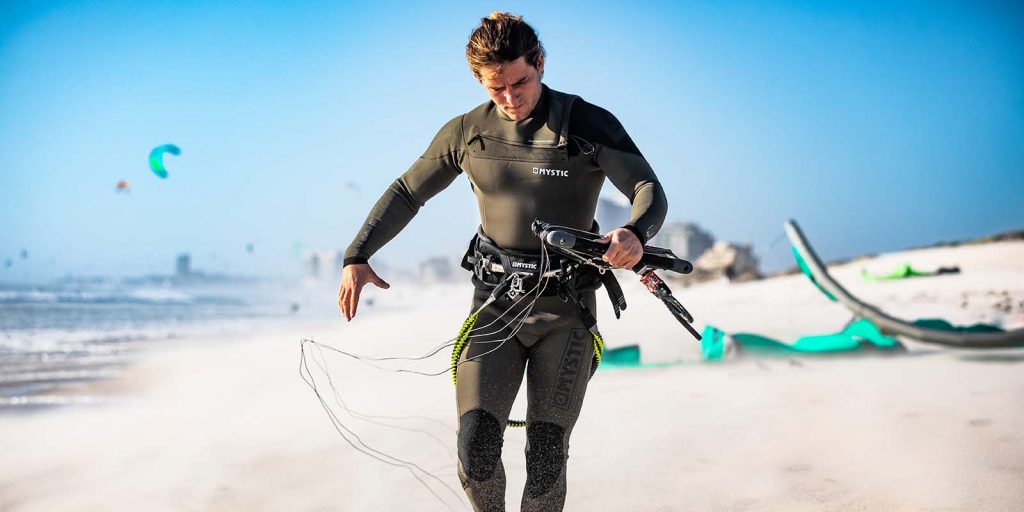
Why?
Maintaining sufficient body heat is a requirement of water sports that must not be overlooked. Purchasing neoprene add-ons for your wetsuit is a great way to ensure that you remain warm and comfortable, whilst also broadening the variety of conditions that you’ll be able to ride in. The combination of high wind speeds and cold seasonal waters can bring the chill to our head, hands and feet; particularly in the UK, where the constantly evolving weather patterns are liable to bring sudden blasts of northerly winds down from the Arctic regions. These are small pieces that can be stashed in your kite bag-grab when needed! We hope you enjoy reading this wetsuit accessories buyer’s guide.
It is important to keep these body parts warm to avoid a range of uncomfortable conditions, including reduced hand movement, chilblains, and in extreme situations, delirium, and a medical condition known as Surfers Ear. It’s also worth remembering that in the very unlikely event that you end up stuck out at sea, you may have to wait hours before rescue.
OK, enough of the medical! Lets take a look at what’s available, and what they do.
Hoods
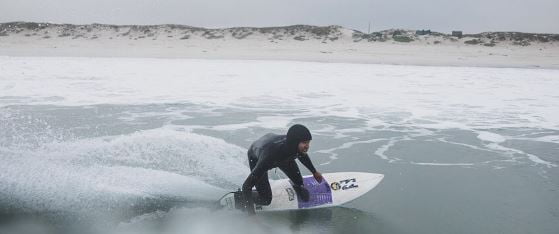
These were developed for surfers, who spend considerable time ducking under waves and rotating in swell. As we loose a considerable amount from our heads, hoods are a superb way of decreasing body heat loss. Some wetsuits come with them built in, and these are generally best for preventing water ingression around the collar. They can also be purchased as an add-on that tucks in around the collar. Long drapes improve efficiency and minimise water ingression.
Thicknesses range from 1.5mm to 3mm.
Other Features
- Visors to prevent solar glare; useful for kitesurfing in northerly winds when you’ll be facing a low winter sun.
- Draw chords. Helps to keep heat in and water out.
- Various types of neoprene that offer different heat retaining efficiencies.
- Silicone taping around openings to improve the seal.
How to Measure
Simply use a tape to measure the circumference around the widest part of your head.
We recommend hoods for winter riding in all UK locations. Riders in the North should consider hooded wetsuits.
Gloves
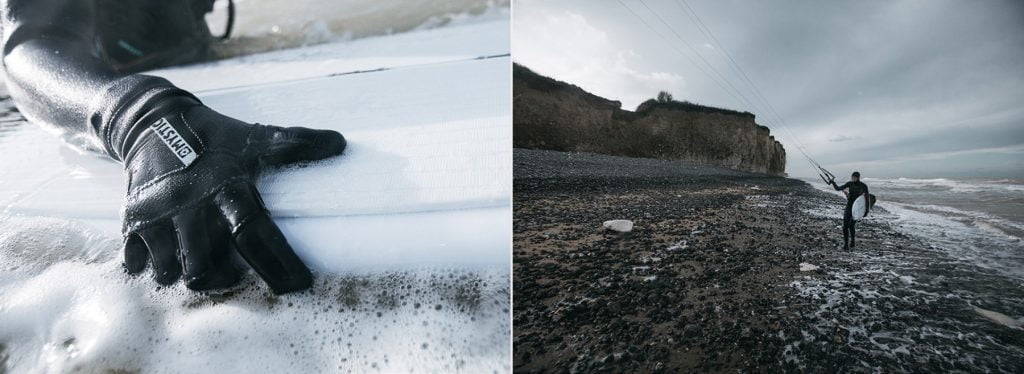
Detailed processes such as kite setup, pack down and safety procedures require good hand dexterity, so asides from your comfort, it’s important to maintain warm hands; especially if you suffer from poor circulation. Fortunately, neoprene gloves are a great way of keeping the blood flowing. Gloves that are a good choice for kiters tend to have grip panels on the underside to help with bar control.
Thicknesses range from 2.5mm to 5mm. It’s advisable to wear the minimum thickness that is comfortable. This ensures a good ‘feel’ of the kite bar; an aspect that can be lost with thicker gloves.
Other features
- Velcro straps. Help to keep the water out, though if tightened too much can reduced blood flow to hands.
- Mitten and lobster gloves. Some consider these warmer, though they are not recommended for kitesurfing due to fiddly line setups and safety protocols.
- Different seams. Cheaper gloves use less effective stitching. Pricier pairs are fused with glue, improving heat retention and flexibility.
Sizing
This is measured with a combination of hand length (from wrist to tip of middle finger) and circumference (around 1st joints of all 4 fingers). An approximate guide:
| SIZE | HAND LENGTH (FT) | PALM WIDTH (FT) |
| S | 7-8 | 7-8 |
| M | 7.5-8.5 | 7.5-8.5 |
| L | 8-9 | 8-9 |
| XL | 8.5-9 | 8.5-9 |
We recommend thick gloves for any rider wishing to kite year round.
Booties

Many do without. It largely depends on a rider’s own physiology and riding style; how good their circulation is, how active they are, how well the can withstand the cold! Cold feet tend to come about from submersion in cold water (think upwind body-dragging) rather then exposure to cold air, and our oceans tend to be coldest in later winter and early spring; a few months behind air temperatures. If you get cold feet, best to get booties as these will increase you comfort and enjoyment. Consider how they will fit with your board. If you use straps they’ll need to be able to accommodate the extra width, and you will loose some feel from the board.
Thicknesses range for 2mm to 7mm.
Other Features
- Velcro straps. These can be at various points on the boot to increase security and water tightness.
- Grips. Smooth to grippy boot soles give a different feel on the board. It’s important to consider beach access when choosing a grip.
- Round toe and split toes. Surfers tend to favour split toes. They give improved feedback and feel of the board, especially with strapless riding. Round toes tend to be warmer as all toes are contained in one chamber.
- Latex dipped. These are the top end. They are the warmest and most flexible boot available, though do not tend to last as long as other designs.
Sizing
Bootie sizes correlate with standard shoe sizes. It’s best to try before you buy, as you want them to be snug, but not overly tight. Generally, booties won’t give with use, so it’s important to get the right fit. If they become too loose, wearing thick socks is a great way to fill any extra space and increase efficiency.
We recommend booties for all winter riding, and spring riding, dependent on individuals susceptibility to the cold.
Jackets and Vests
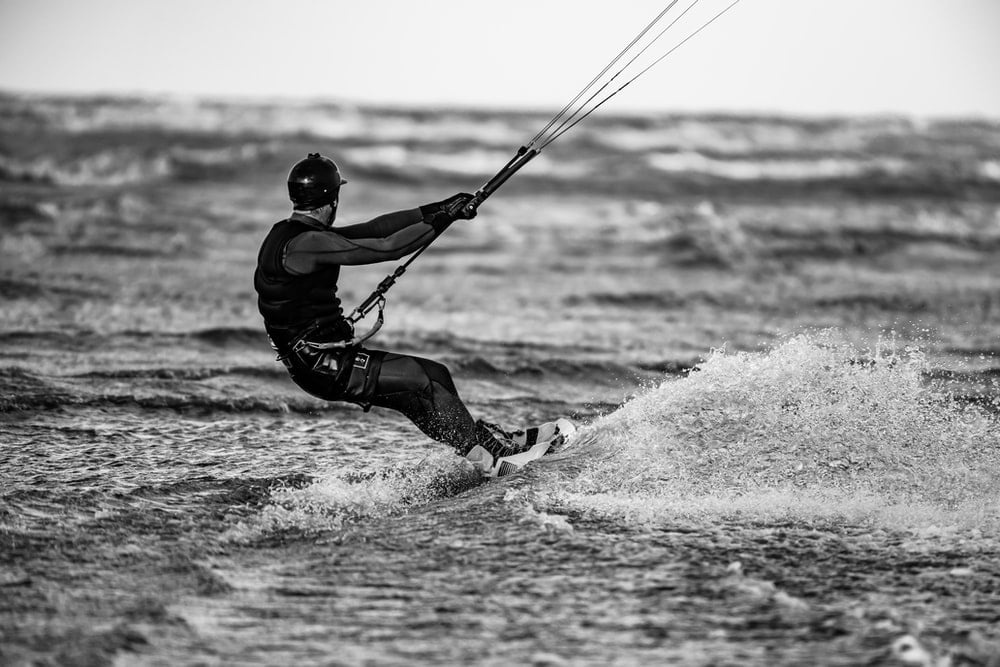
The addition of an extra upper layer is by far the most effective way of increasing your warmth. There are three main types:
- Impact and floatation vests. The most popular, and available in many different styles and sizes. They are like a snug fitting gilet for the water, and are padded with foam that, as the name suggests, increases floatation, heat retention in the upper body, and provides protection in any unfortunate collisons.
- Buoyancy aids. If buoyancy is your primary consideration; say if you are a beginner, then these provided unparalleled floatation. They also come with front facing pockets that can store line knives and other small items. They also contribute to heat retention.
- Wind proof jackets. A very effective way of retaining warmth without sacrificing flexibility. These really can take the bite out of the wind, and don’t have to be water sport specific; an old outdoor jacket makes a good example. The addition of a hood can be beneficial, especially if riding in rain, and for securing a hat. Of course, they don’t add buoyancy or impact protection.
Other Considerations
- Impact and floatation vests comes as zip ups and pull-overs. Zip-ups are easier to access, but require more maintenance to prevent the zip from seizing.
- Wind protection can offer a cheaper and more flexible alternative to multiple thickness wetsuits.
We recommend the use of an impact and floatation vest, or buoyancy aid to all beginners.
Helmets
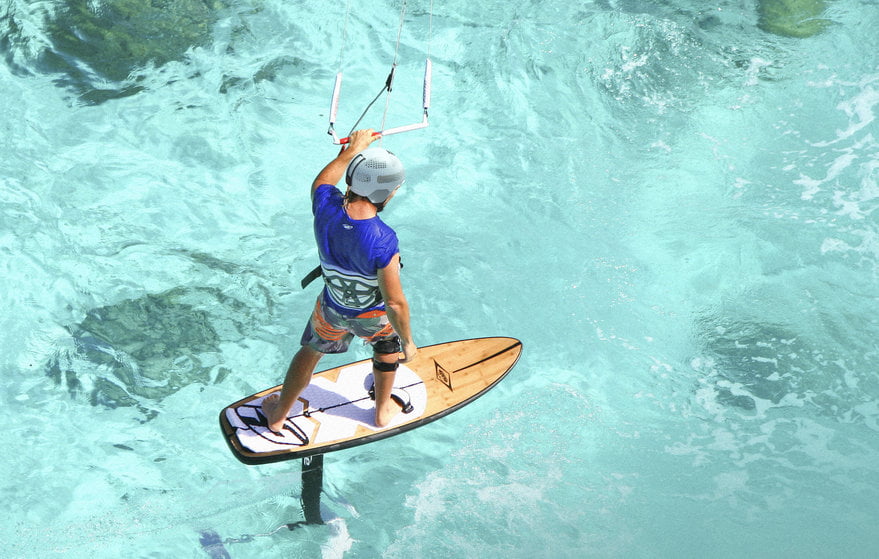
We recommend these to beginners for a number of reasons:
- They provide good protection for your head in the event that you loose control of the kite; especially when on a crowded beach with groynes and other hazards. Your board can also be hazard if it comes loose whilst riding.
- They indicate to others that you’re a beginner; riders will give you due consideration and assistance when necessary.
- They are an assurance, to make you feel more comfortable and secure when learning.
- Provide added warmth.
Types of Helmets
All kitesurfing helmets are built to a set standard to ensure that they provide you with good protection. Styles vary, along with comfort features. All helmets are adjustable from the chin strap, and the more expensive designs come with a dial adjustment at the back to ensure that the helmet sits optimally. They also tend to have magnetic closure systems; especially useful with cold fingers! Both size and comfort are the most important considerations. As such, we recommend that you try before you buy in-shop. If this isn’t possible, here is a sizing chart to help guide you.
Sizing
The measurement is of the circumference of the widest part of your head.
| Size | cm |
|---|---|
| XS | 52-54 cm |
| S | 54-56 cm |
| M | 56-58 cm |
| L | 58-60 cm |
| XL | 60-61 cm |
Getting a good fit is important to ensure that the helmet works properly. A loose fitted helmet can obstruct your view, whilst failing to protect the vulnerable areas in the event of a collision. If too tight, it will be uncomfortable, and likely give you a headache.
We recommend helmets for all beginners, and advise for general use.
Finally…
So as you can see, there are many different additions available to increase warmth, comfort, and protection. Collectively these can mean the difference between a comfortble sunset session, or a miserable ride cut short by frozen fingers. Give us a call to dicuss further. We hope you’ve enjoyed reading this wetsuit accessories buyer’s guide.
